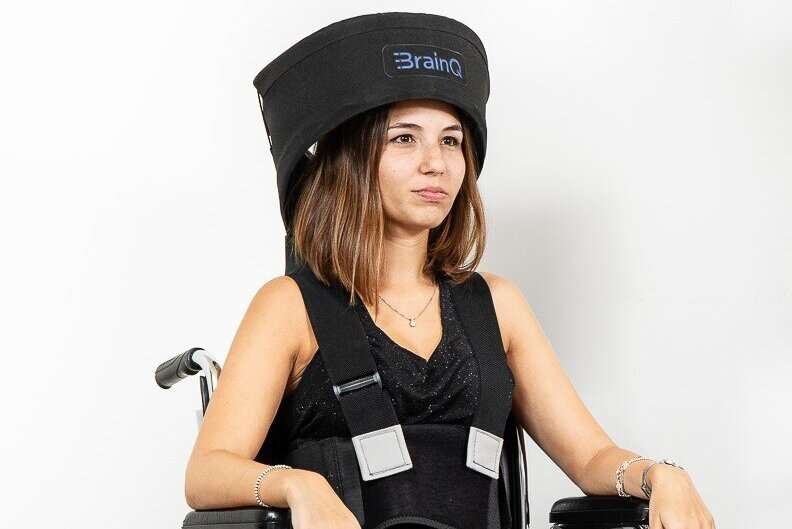Electromagnetic stimulation may improve arm and hand function after spinal cord injury

Ghaith Androwis, Ph.D., and Steven Kirshblum, MD, received a grant from BrainQ Technologies to study a potential treatment for arm and hand dysfunction in individuals with chronic spinal cord injury. The study is titled, "The safety and effectiveness of the use of a brain-computer interface-based electromagnetic field treatment in the management of patients with chronic spinal cord injury: A pilot study."
Dr. Androwis is a research scientist in the Center for Mobility and Rehabilitation Engineering Research at Kessler Foundation. Dr. Kirshblum is senior medical officer and director of the Spinal Cord Injury Program for Kessler Institute for Rehabilitation, chief academic officer for the Select Medical Rehabilitation Division and the chief medical officer of Kessler Foundation. He serves as chair of the Department of Physical Medicine and Rehabilitation at Rutgers New Jersey Medical School.
An estimated 17,500 cases of new spinal cord injuries occur each year in the United States. More than half of these individuals experience loss of motor function of the upper extremities that limits their independence and adversely affects their quality of life. ""At Kessler Foundation, we look at how state-of-the-art technologies and novel interventions can improve motor control and function for persons with neurological disability," said Dr. Kirshblum. "To achieve the best outcomes after spinal cord injury, restoring arm and hand function must be a priority in rehabilitative care," he emphasized. "This study is an important first step toward increasing the ability of individuals to function more independently at home, in their communities, and the workplace," he emphasized.
With this multi-center grant, researchers will test the safety and efficacy of noninvasive low frequency electromagnetic field stimulation delivered via the BQ System. Individuals with spinal cord injury (duration 18-30 months) will participate in the 34-week study. Functional status will be measured at baseline and compared with status following the experimental treatment. By quantifying gains in motor function, motor control and activities of daily living, this pilot study will provide preliminary information on the potential application of BrainQ's therapy in rehabilitation programs for individuals with disability.
"We are very interested in testing the effectiveness of this novel and non-invasive approach in persons with spinal cord injury," added Dr. Androwis. "Such interventions may improve participants' performance of activities of daily living leading to gains in their overall quality of life. This particularly is important when an intervention can be provided simultaneously with conventional therapy."
More information: brainqtech.com/















